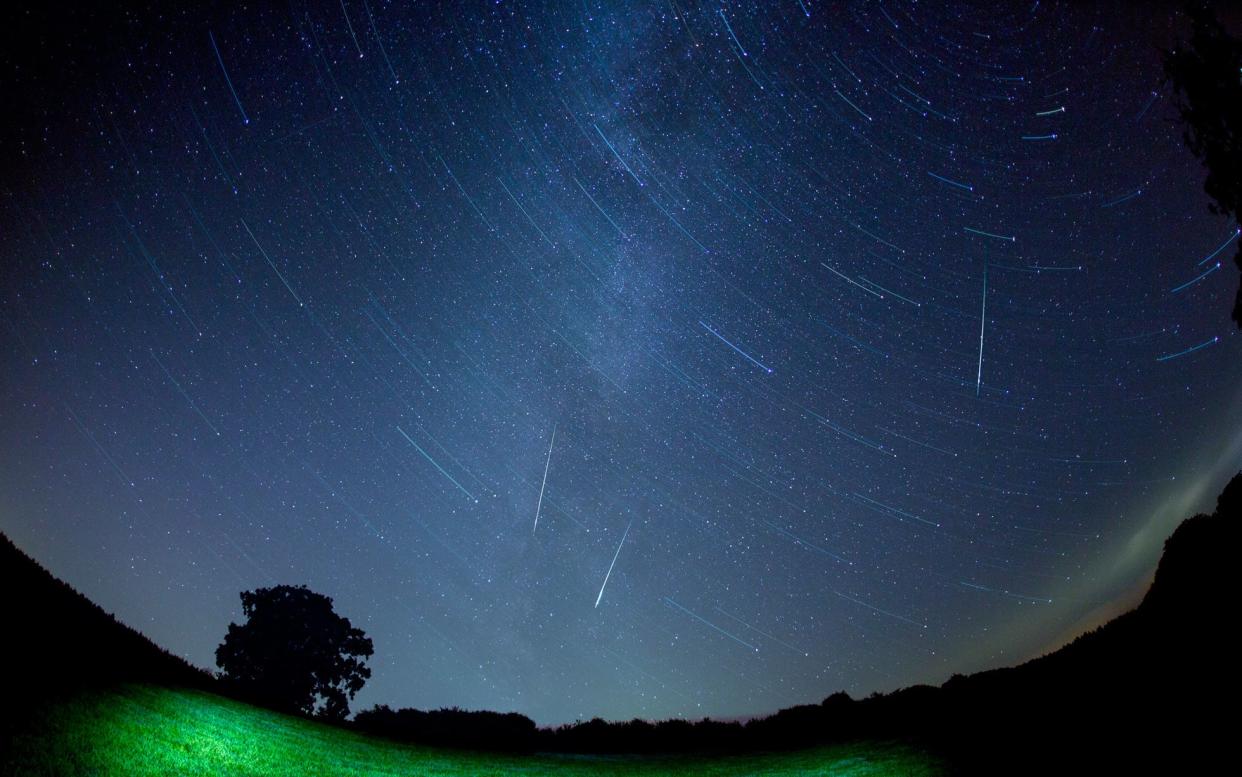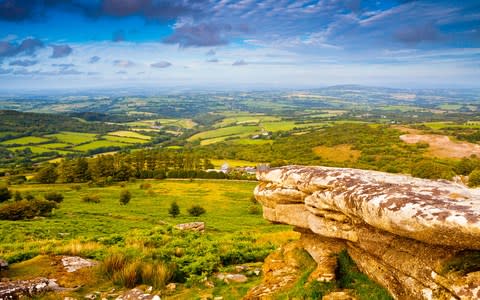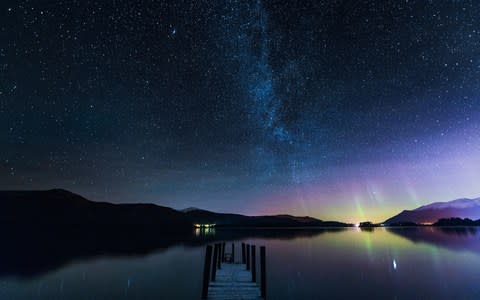The best places in the UK to watch the Perseid meteor shower this weekend

While the Perseid meteor shower may be an annual event, streaking our skies with trails of light for a couple of weeks each year, this one promises to be particularly special.
Not only does its peak fall over a weekend, when many of us are likely to be more willing to sit in the middle of a field at 1am wrapped in a blanket gazing upwards, it also occurs during a new moon.
While the shower is due to last into the third week of August, it is expected to peak on the night of August 12, with the evenings either side (August 9–16) also promising good viewing – especially with the new moon falling on Saturday (August 11). All we need is for the weather to cooperate.
So where should one watch said cosmic show? Luckily, less than ten per cent of Britain is urban, meaning there’s over 90 per cent of cityless skies to choose from. Here are some of the finest.
Dark Sky Reserves
There are just 11 Dark Sky Reserves in the world, and the UK is home to an impressive four of them. Promising an “exceptional or distinguished quality of starry nights and nocturnal environment”, it’s worth seeing if you’re close to one of these as a starting point.
Brecon Beacons
Wild, barren and expansive, the Brecon Beacons is a great place for a spot of stargazing. Stretching from Llandeilo in the west to Abergavenny in the east, the national park has plenty to offer hikers and bikers as you while away the day waiting for the shower to appear. You can even clamber behind a waterfall at Sgwd yr Eira if the mood takes you.

Exmoor
The first in Britain to be named a Dark Sky Reserve, Exmoor’s weather is, perhaps, a little more reliable. Once a Royal forest and hunting ground, the upland areas make for some good celestial admiration and few places boast better views than Dunkery Beacon, the highest point on Exmoor. Neighbouring Blackdown Hills (an Area of Outstanding Natural Beauty) is also a good place to gaze heaven-wards.
Snowdonia
Another remote part of Wales, what Snowdonia lacks in people, it more than makes up for in the blackness of its skies. The first national park in the country, it covers 827 square miles. While climbing Snowdon’s peak is a popular pastime, Llyn y Dywarchen, located above the village of Drws y Coed in Dyffryn Nantlle, is one of the best places to sky watch, along with Llyn Geirionnydd and Llynnau Cregennen (so basically any large lakes).
10 UK campsites with incredible mountain views
South Downs
The most accessible to London, South Downs is not only one of the UK’s newest national parks, it is also one of its newest Dark Sky Reserves and has been praised as being one of the most accessible dark sky areas in the world. Some of the best meteor watching spots here include Butser Hill, Iping Common, Bignor Hill and Devil’s Dyke. There’s also the Winchester Science Centre & Planetarium if you fancy keeping your toes warm.
At a glance | The world's 11 Dark Sky Reserves
Dark Sky Parks
A step down from Dark Sky Reserves, these parks do not need the dark “core area” that the IDA (International Dark-Sky Association) requires for the status of reserves, but still offer exceptional sky-gazing.
Bodmin Moor
Proving there’s more to Cornwall than Poldark, Bodmin Moor was awarded its status as a Dark Sky Park just last year (July 2017). If you’re away camping with the family or enjoying a summery sea break, swing by the popular Jamaica Inn for a bite to eat before heading out to the moor where some of the best meteor spotting sites include Colliford Lake Park and the rather excellently named Sillyback Lake and Crowdy Reservoir.

Elan Valley Estate
Smack bang in the middle of the country, on the mountainous “spine” of Wales, Elan Valley Dark Sky Park is one of the few privately owned but publicly accessible parks on the list and its 45,000 acres promise a plethora of top sky-watching spots. To see some meteor dancing, head to Claerwen Dam, Teifi Pools or a number of carparks (see here for more information).
At a glance | The Perseids
Northumberland National Park and Kielder Water & Forest Park
Spanning a large portion of Northumberland, this Dark Sky Park is England’s most northerly. Kielder Forest is officially the darkest place in the country – its 250 square miles of woodland beauty brushing up against the English border with Scotland. It even has its own modern, wood-clad observatory on the slopes of Black Fell above Kielder Water.
Galloway Forest Park
Just a couple of hours from Glasgow and an hour from Carlisle lies Galloway Forest Park. While it can suffer from the same cloudy skies as the rest of the UK, clear nights here are hard to beat – especially if they’re ribboned with the trail of meteors. The park's most popular spot for stargazing is Loch Trool, but the Wigtownshire Astronomical Society also recommends The Machars, the sparsely populated hills and moorland south of the 17th-century market town of Newton Stewart. Its three visitor centres all have “dark sky” signposts that tell you exactly what constellations to look for during each season, so you can spot some stars while you’re waiting for the main show.
In the country | Five night walks
Other good sky-watching spots
Isle of Man
As well as the Dark Sky parks and reserves, there are over 100 Dark Sky Discovery sites across the British Isles – and the Isle of Man lays claim to an impressive 26 of these. Here, the Milky Way and Orion Nebula are commonly visible and the Northern Lights have even been spotted from the northeast coast.
Perthshire
“Galloway's forests can boast about their Dark Sky Park status, but Perthshire probably gets the nod as Scotland's finest arboreal landscape”, says Norman Miller. Loch Rannoch is at the heart of the best sky-watching territory, with the Tay Forest Park and Rannoch Moor popular favourites.
North York Moors
The North York Moors is not only good for star watching, but at this time of year it’s coated in vibrant purple heather. According to Helen Pickles, Telegraph Travel’s local expert, “It is heady, head-turning, mesmerising stuff, and the biggest stretch of heather moorland in England and Wales; a purple playground where you can walk, romp, relax or just search for the perfect Instagram shot”. All before you’ve even so much as seen a meteor.
Lake District
The Lakes are one of our favourite holiday destinations, with stunning scenic views stretching for miles. Grizedale Forest Park offers superb stargazing by night and the pleasures of Coniston Water, Windermere and the Grizedale Sculpture Park by day. Head to Bassenthwaite Lake this summer if you prefer to sky-gaze in peace.

Isles of Scilly
If it's peace you're looking for, there are few places in the UK that feel more remote than the Isles of Scilly. Even St Mary’s, which is often considered the ‘busy’ island rarely feels more than a little bustly. Hop on the newly reopened helicopter to the island and head to Star Castle for some sky-watching in style. If you want it even quieter, with as few people as possible, opt for nearby Bryher or Tresco islands instead.
Win a luxury holiday worth up to £80,000

